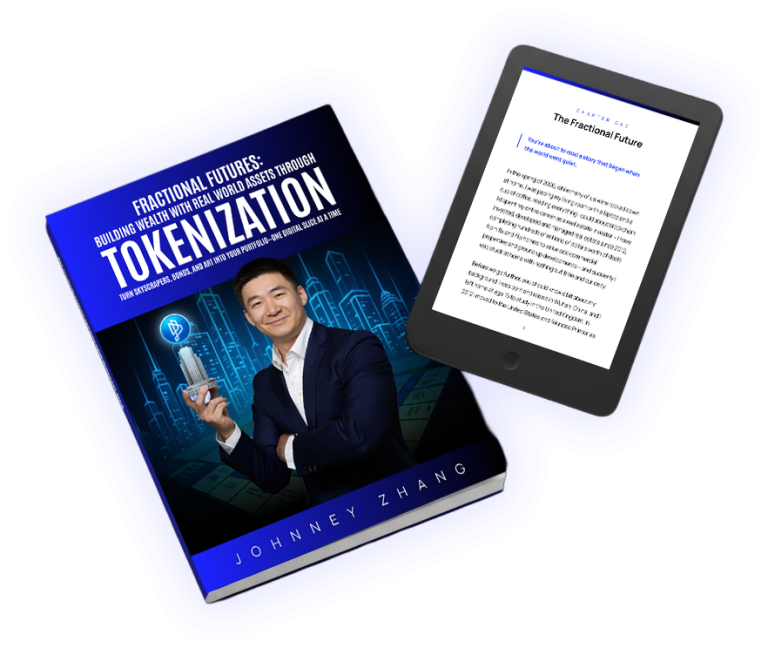Real estate investments typically tie up capital for years. Property sales take 3-6 months to complete on average. This lack of liquidity remains a major roadblock for investors who want to manage their portfolios effectively.
Tokenized real estate offers a solution to this ongoing challenge. Blockchain technology allows investors to buy, sell, and trade property investments more freely through real estate tokenization. Digital tokens have created new opportunities for liquidity in what used to be a static market.
This detailed analysis gets into how tokenized real estate stacks up against traditional investment approaches when it comes to liquidity. You’ll learn about the main systems that boost liquidity and the potential risks involved. The piece explains how these state-of-the-art changes could reshape investment strategies in real estate. Investors will find everything they need to know to decide if tokenized real estate lines up with their investment goals and risk comfort level.
Understanding Investment Liquidity Fundamentals
Liquidity shows how easily you can convert an asset into cash without substantially affecting its market price. Learning this basic concept is vital to make smart investment decisions in both traditional and tokenized real estate markets.
Defining liquidity in real estate investments
Real estate ranks nowhere near as liquid as stocks or bonds. This comes from property transactions’ complex nature that needs extensive documentation, due diligence, and longer settlement periods. You can measure the property market’s liquidity by how fast transactions complete and knowing how to sell at a price that shows the asset’s true market value.
Key factors affecting asset liquidity
Real estate liquidity depends on several important factors:
- Location and Market Dynamics: Properties in prime locations with good transport links and infrastructure usually stay more liquid
- Property Characteristics: Smaller properties and those with affordable price ranges tend to be more liquid than larger, expensive assets
- Economic Conditions: Market cycles and interest rates affect property liquidity substantially, and lower rates usually mean higher liquidity
Property type and liquidity share a clear relationship. Residential properties, especially apartments and single-family homes, are more liquid than specialized commercial properties.
Importance of liquidity for investors
Liquidity is a vital part of investment strategy and risk management. Cash remains the most liquid asset, but real estate’s lower liquidity can offer some advantages. To name just one example, reduced liquidity can protect investors from making quick decisions because of market volatility.
Investors must balance their portfolios carefully between liquid and illiquid assets. This balance becomes especially important when:
- Managing cash flow requirements
- Responding to market opportunities
- Handling unexpected financial obligations
Tokenized real estate opens new ways to improve property investment liquidity while keeping real estate’s benefits as a stable, long-term investment vehicle. Investment advisors can give an explanation about balancing these factors to investors who want to optimize their real estate portfolio’s liquidity.
Traditional Real Estate Investment Liquidity
Real estate markets show specific patterns in how properties are bought and sold. These patterns affect investment strategies in different property types and are a great way to get context when evaluating modern investment options.
Direct property investment liquidity analysis
Direct property investments have major liquidity limitations. Transaction completion times vary based on market conditions and property types. Single-family homes and apartments are more liquid than commercial properties. The sales cycle can take longer because of thorough due diligence requirements, which affects overall returns. Market data shows that transaction volumes usually drop before prices change, which serves as an early warning sign of market changes.
REIT liquidity characteristics
Real Estate Investment Trusts (REITs) are more liquid than direct property investments. More than 200 REITs trade on major U.S. stock exchanges with a combined equity market value of over $1 trillion. Their main features include:
- Daily trading on major exchanges
- Quick price discovery mechanisms
- Lower transaction costs than direct property sales
- Better access for investors
Market dynamics and trading volumes
Market conditions affect real estate liquidity in investments of all types. Recent data reveals a 26% year-over-year increase in global direct investment volumes during the third quarter, with a 6% increase year-to-date. Market conditions are improving, though regional differences continue.
Price and trading volume relationships show important market patterns. Research covering 114 metropolitan areas proves that labor market conditions, mortgage rates, and stock market performance affect both home prices and trading volumes. Market factors are interconnected, which shows how complex real estate liquidity can be.
Real estate investors need to understand these traditional market mechanisms to optimize their portfolio’s liquidity. REITs are more liquid than direct property investments, yet market-driven constraints can still affect their trading volumes and price stability. Traditional liquidity characteristics are the foundations for evaluating new investment vehicles as the real estate investment world evolves.
Tokenized Real Estate Liquidity Mechanisms
Blockchain technology revolutionizes how people buy and sell real estate assets by bringing new ways to boost market liquidity. Property owners can now split their assets into digital tokens that represent ownership shares. These tokens trade much more easily than traditional real estate assets.
Blockchain-enabled trading platforms
Modern trading platforms employ smart contracts that automate property deals without traditional middlemen. These contracts run by themselves to handle complex deals and cut down costs by a lot. The platforms come with these key features:
- Automated validation and verification of transactions
- Immediate settlement capabilities
- Less need for middlemen
- Clear record-keeping
Secondary market development
Secondary markets now let people trade tokenized real estate assets around the clock. These markets show different activity levels. Data reveals average monthly turnover rates hit 15% in early stages, which means properties changed hands about 1.8 times yearly.
Listing tokens on platforms like Uniswap makes a big difference to market liquidity. Research shows that properties on Uniswap got 8.62 percentage points more liquidity than unlisted ones.
Trading volume analysis
Tokenized real estate trading volumes follow specific patterns in different market stages. Latest numbers tell us:
- Trading peaked early with 15% monthly turnover
- Markets settled down later to about 5% monthly turnover
- Uniswap-listed properties kept 3.76 percentage points extra liquidity even after market adjustments
Transaction costs shape trading activity heavily. Higher Ethereum network fees clearly hurt trading volumes. The new settlement fees on tokenized property transfers give platform operators fresh ways to earn money, just like traditional payment processors do.
Real estate investors looking to make their portfolios more liquid will find these new methods promising. Automated trading platforms, growing secondary markets, and rising trading volumes point to a more mature ecosystem that supports tokenized real estate investments.
Comparative Liquidity Analysis
Let’s look at how liquidity mechanisms work differently in traditional and tokenized real estate investments. This analysis looks at three vital areas: transaction speed, costs, and market depth.
Transaction speed comparison
Tokenized real estate transactions are much faster than traditional methods. Regular property deals usually take 6-12 months to complete. But tokenized real estate lets you settle deals almost instantly using blockchain technology. You can see this speed boost especially when dealing with fractional ownership transfers. Tokenization cuts down the waiting time by 6-12 months when you compare it to old-school methods.
Cost analysis of liquidation
Traditional and tokenized real estate have very different cost structures:
- Traditional liquidation comes with brokerage fees, legal expenses, and various transaction fees
- Tokenized real estate costs less because it uses automated processes
- Secondary trading in tokenized properties costs just a fraction of what you’d pay for traditional transactions
Market depth evaluation
Market depth shows interesting patterns in both traditional and tokenized markets. Traditional real estate markets have different liquidity levels based on property type and location. Tokenized markets are getting deeper through:
| Aspect | Traditional Market | Tokenized Market |
|---|---|---|
| Trading Hours | Limited to business hours | 24/7 trading availability |
| Market Access | Restricted by location | Global accessibility |
| Transaction Size | Large minimum investments | Fractional ownership enabled |
Recent numbers show that 43% of investors choose tokenized real estate because it offers better liquidity. People now recognize that tokenization helps solve the liquidity problems of traditional real estate while keeping investments stable.
Tokenized real estate’s market depth keeps growing, and secondary markets look promising. Note that even though tokenization makes real estate more liquid than traditional methods, market conditions can still affect token sales, especially during uncertain times.
Smart investors who want to improve their real estate portfolio’s liquidity need to understand these comparisons to make strategic decisions. The data shows that tokenized real estate makes it easier to buy and sell while reducing the usual barriers in real estate investments.
Risk Considerations in Liquidity
Tokenized real estate provides better liquidity options, but investors need to review the risks that affect their trading efficiency. These risk factors are the foundations of smart investment decisions in this evolving market.
Market volatility impact
Market volatility disrupts trading activities in tokenized real estate markets. Trading volumes drop and sometimes stop completely during volatile periods. The connection between volatility and liquidity becomes obvious when market participants have unequal access to information.
Key risk factors affecting market liquidity include:
- Price discovery challenges during volatile periods
- Reduced trading volumes in uncertain markets
- Wider bid-ask spreads during market stress
- Large orders’ effect on market prices
Regulatory risks
The rules governing tokenized real estate create substantial challenges that can affect market liquidity. Rules differ in various jurisdictions – some regions label tokens as securities while others see them as cryptocurrencies or new asset classes. This regulatory uncertainty raises several key points:
Trading platforms need regulatory approval to handle security token transactions. To cite an instance, tokenized real estate trades happen only on SEC-registered platforms like national stock exchanges or Alternative Trading Systems (ATSs) in the U.S.
| Risk Type | Impact on Liquidity |
|---|---|
| Regulatory Compliance | May restrict trading venues |
| Cross-border Trading | Can limit international liquidity |
| Investor Restrictions | May reduce potential buyer pool |
Technology and platform risks
Technology infrastructure behind tokenized real estate brings unique risks that can hurt trading liquidity. Smart contracts, which power tokenization platforms, might have coding flaws or security gaps that could lead to stolen or lost tokens.
Cybersecurity threats pose real dangers to platform operations and investor assets. Common vulnerabilities include:
- Unauthorized access attempts targeting investor funds
- Phishing attacks impersonating legitimate platforms
- Smart contract vulnerabilities affecting token transfers
- Platform outages impacting trading ability
Recent data shows cybersecurity breaches cause collateral damage beyond immediate financial losses. These incidents can shake investor confidence and reduce participation in tokenized real estate projects. A security breach in one platform could spread to multiple platforms and their assets because of their interconnected nature.
Smart investors in tokenized real estate must understand these risks to manage their portfolios better. Market volatility, unclear regulations, and tech risks need careful planning and solid risk management. Staying informed about these changing risk factors helps maintain good portfolio liquidity as the tokenized real estate market grows.
Conclusion
Property investment has changed dramatically with real estate tokenization. This new approach brings better liquidity to the market. Investors and sellers should weigh both the opportunities and risks carefully. Traditional real estate deals used to take months to close. Now, tokenized platforms make transactions almost instant and automated systems cut costs big time.
The numbers tell an interesting story. About 43% of investors now choose tokenized real estate mainly because it’s easier to buy and sell. Trading happens round the clock in secondary markets. Qualified investors can now buy smaller portions of properties too. But success in this dynamic market needs a solid grasp of market swings, rules, and tech aspects.
Smart investors looking to make their real estate portfolio work better can get great insights from experts in this field. Schedule a strategy call with Primior’s investment experts to see how tokenized real estate could boost your portfolio’s liquidity while keeping risks in check.
Real estate investment keeps evolving through tokenization. This offers new ways to solve old liquidity problems. Smart investors who get both the benefits and challenges of this state-of-the-art approach are ready to tap into its potential. They know how to manage risks properly too.















